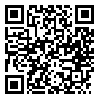BibTeX | RIS | EndNote | Medlars | ProCite | Reference Manager | RefWorks
Send citation to:
URL: http://jdm.tums.ac.ir/article-1-5267-en.html
Background and Aims: Temporomandibular joint disorders are common problems among patients referring to dental schools and clinics. However appropriate treatment modalities are performed for the TMD patients in dental school, the results and success rate of these treatments are not studied distinctly. The aims of this study was to determine the treatment performed for temporomandibular patients at the TMJ department of Tehran University dental school in 2010-11 .
Materials and Methods: In a descriptive cross-sectional trial, 85 TMD patients treated at the TMJ department of Tehran University dental school were examined at least 3 months after the treatments. The patients demographic data ,TMD signs and symptoms and the improvements occurred in TMD disorder were determined (complete, partial and no improvement). The patients satisfaction regarding the treatment results were investigated and data were analyzed regarding the presence of different TMD signs and symptoms before and after the treatment using Mann-Whitney U test .
Results: TMJ pain (35 cases, 42.2%), click (33 cases, 39.8%) and muscle tenderness (26 cases, 31.3%) were the most prevalent obtained signs and symptoms. The mean age of the patients were 32.3 years old while females were the predominant group (72 cases vs.11 one). 44 individuals (53.0%) were treated by splint, 11 ones (13.3%) with anterior repositioning splint and 17 individuals (92.5%) were managed by physiotherapy plus splint. 65 patients (87.3%) were satisfied with the results and 16 ones (19.3%) were not. After the treatment, patients with TMJ pain (P<0.001) and muscle tenderness (P<0.001) showed significantly lower satisfaction than that of patients with no signs. No other significant differences were noted between patients satisfaction regarding the presence of TMD signs and symptoms (P>0.05) .
Conclusion: The results showed that the treatments presented for the TMD patients at Tehran University dental school were successful and most patients received satisfactory treatment.
Received: 2014/12/22 | Accepted: 2014/12/22 | Published: 2014/12/22
| Rights and Permissions | |
 |
This work is licensed under a Creative Commons Attribution-NonCommercial 4.0 International License. |




